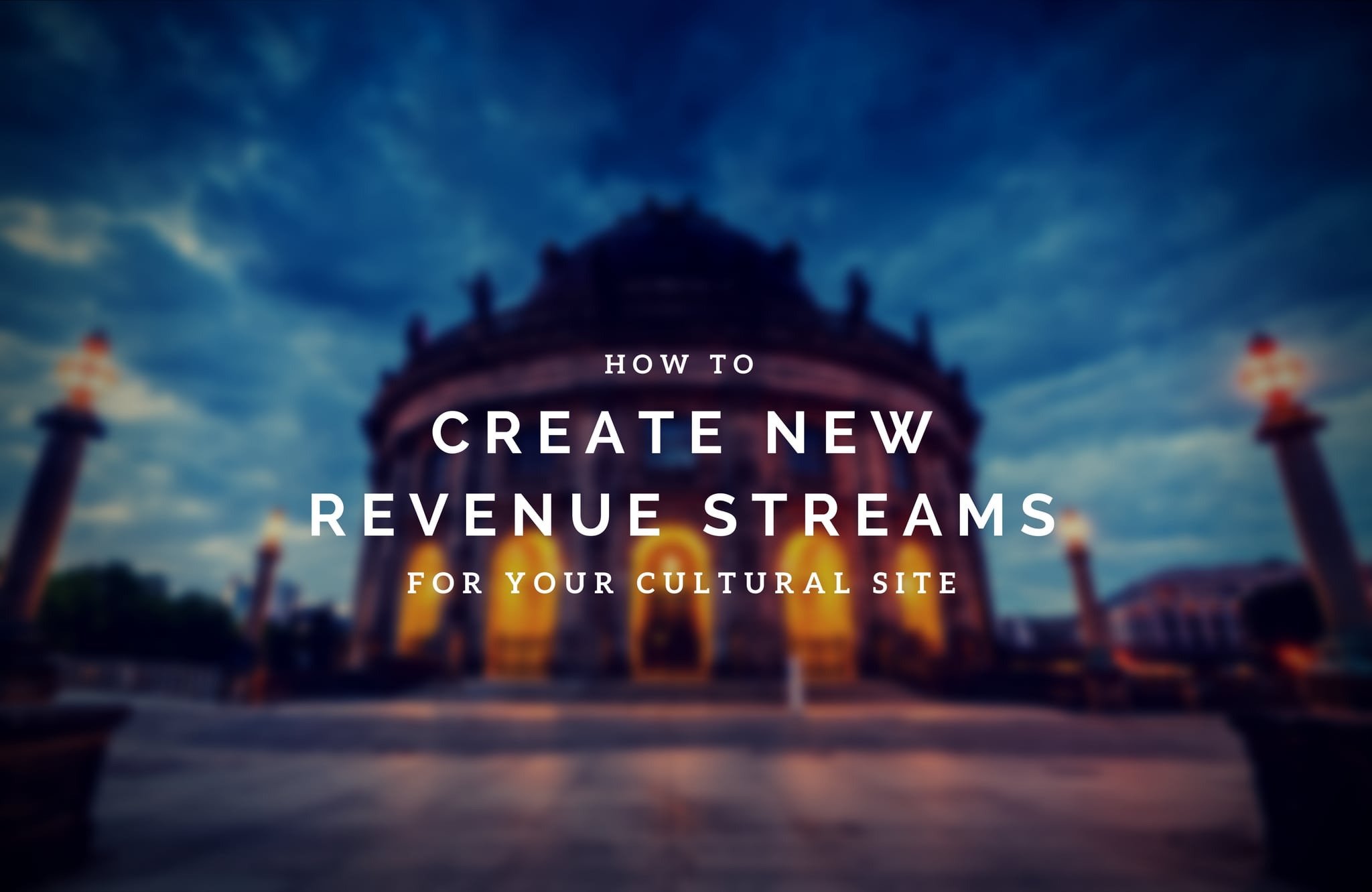How to Create New Revenue Streams for your Cultural Site
Thursday, February 16, 2017 1:00 PM by Taylor Studios in Professional and Industry Tips

“Multiple Streams of Income.” It became something of a mantra during the last economic recession and the advent of the gig economy, but it’s also good practice for museums and cultural sites.
Even organizations that haven’t fallen on hard times would be well advised to diversify their revenue sources in preparation for the next rainy day—whether that be a depletion of public funding, a decline in charitable donations, or internal challenges.
Here are a few ideas that may help keep the boat afloat during desperate times—or perhaps become part of your long-term revenue strategy:
Special Programs – Before you write this off as more trouble than its worth, keep in mind we’re not necessarily talking a full-blown black tie gala with plated dinners. Consider simpler events like:
TED Talk-style series of lectures or presentations. Check out the evening lineup at the Denver Museum of Nature & Science.
Film screenings or even a film festival (is there a local art theatre around that might be eager to collaborate?)
“Adults-only” after-hours events, such as “Brew at the Zoo” and “Night at the Museum”
Simple wine and cheese receptions with resident artists or academics
Just make sure that whatever you offer does, in fact, align with your mission in some authentic way; you don’t want hodge-podge programming or an event with a “fly-by-night” vibe.
Rentals – If you’ve already exhausted throwing your own events (or they’ve exhausted you), consider hosting private events in your space. In this scenario, you’re just the venue—the clients do all the planning. Museums and nature centers can offer a more prestigious or interesting environment than standard hotel ballrooms for many types of events, such as:
Weddings
Galas or balls
Corporate parties
Political fundraisers
Banquets
Family reunions
Photo or film shoots
Graduations, Inductions or other ceremonies

See how Kenosha Public Museum succeeds in facility rental. If you are concerned about rambunctious guests run amok amid your artifacts, consider limiting access to galleries for a certain timeframe (e.g. the first hour of the event). Be sure to charge adequate fees to cover extra docents or security. You might also require clients to select from a “preferred vendor” list of caterers, DJs, florists, wait staff, etc—people whom you know and trust to respect your space.
When venturing into the rental venue business for the first time, it is well worth the initial investment to have your attorney’s help in drawing up a rental agreement and ensuring you have all the required insurance, licenses, permits and tax information for this line of business.
Once you have solid policies and paperwork in place, however, rentals can be a relatively “rinse and repeat” revenue stream.
Auctions – Add a silent auction to an existing event, or conduct an online auction as a stand-alone fundraiser. Several auction companies offer software and personal services to help you administer an auction that will pay for itself many times over. Check out Qtego and 32auctions to start. They vary somewhat in features, user interface, and pricing, so the scope of your auction, budget and technological comfort level will help determine the best fit for your organization.

Image Zachary Collier
Technology aside, auction administration can be tedious and time consuming if you do it all yourself—but if you can recruit the help of volunteers, interns and board members, an auction can pay off.
Form a committee and ask everyone on it to obtain 10 donated items. Be sure to equip your committee members with information about the event and the cross-promotional opportunities available to auction item donors. Local businesses are more eager to give when they know they can get a tax write-off for their donated merchandise and receive promotion in exchange for their participation.
When it comes to auction items, think outside the box! Embrace the power of suggestion to give your items more appeal. For example, instead of a $50 gift certificate to your local bakery, market it as “Coffee and Pastry Breakfast Party for your Office” (Cash Value $50). This gives people an idea for how they might use the item, rather than just focusing on its price tag.
In addition to drumming up donations throughout your community, think of some unique items or experiences that your own organization can contribute and/or bundle with other donations.
Some examples:
catered for two – donated by a local restaurant
private or after-hours access to a special location at your site (e.g. the gazebo overlooking the lake at your nature center) – donated by you
personal tour of your exhibits – donated by you
hour-long instrumental music/serenade – donated by a local musician or student
flower arrangement for the table – donated by a local florist
bottle of wine – donated by a private collector
Now light some candles on the table, and for little to no out-of-pocket cost, you have a package whose fair market value might be a few hundred dollars but whose perceived value—to the right bidder—could be priceless.
Share this on social networks